Related Research Articles

Emissions trading is a market-oriented approach to controlling pollution by providing economic incentives for reducing the emissions of pollutants. The concept is also known as cap and trade (CAT) or emissions trading scheme (ETS). One prominent example is carbon emission trading for CO2 and other greenhouse gases which is a tool for climate change mitigation. Other schemes include sulfur dioxide and other pollutants.
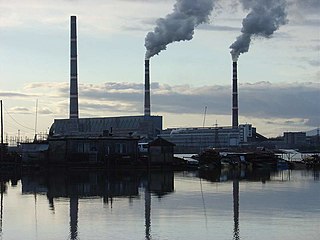
A carbon tax is a tax levied on the carbon emissions from producing goods and services. Carbon taxes are intended to make visible the hidden social costs of carbon emissions. They are designed to reduce greenhouse gas emissions by essentially increasing the price of fossil fuels. This both decreases demand for goods and services that produce high emissions and incentivizes making them less carbon-intensive. When a fossil fuel such as coal, petroleum, or natural gas is burned, most or all of its carbon is converted to CO2. Greenhouse gas emissions cause climate change. This negative externality can be reduced by taxing carbon content at any point in the product cycle.

Energy policies are the government's strategies and decisions regarding the production, distribution, and consumption of energy within a specific jurisdiction. Energy is essential for the functioning of modern economies because they require energy for many sectors, such as industry, transport, agriculture, housing. The main components of energy policy include legislation, international treaties, energy subsidies and other public policy techniques.

Climate change mitigation (or decarbonisation) is action to limit the greenhouse gases in the atmosphere that cause climate change. Climate change mitigation actions include conserving energy and replacing fossil fuels with clean energy sources. Secondary mitigation strategies include changes to land use and removing carbon dioxide (CO2) from the atmosphere. Current climate change mitigation policies are insufficient as they would still result in global warming of about 2.7 °C by 2100, significantly above the 2015 Paris Agreement's goal of limiting global warming to below 2 °C.

Carbon offsetting is a carbon trading mechanism that enables entities to compensate for offset greenhouse gas emissions by investing in projects that reduce, avoid, or remove emissions elsewhere. When an entity invests in a carbon offsetting program, it receives carbon credit or offset credit, which account for the net climate benefits that one entity brings to another. After certification by a government or independent certification body, credits can be traded between entities. One carbon credit represents a reduction, avoidance or removal of one metric tonne of carbon dioxide or its carbon dioxide-equivalent (CO2e).

The European Union Emissions Trading System is a carbon emission trading scheme that began in 2005 and is intended to lower greenhouse gas emissions in the EU. Cap and trade schemes limit emissions of specified pollutants over an area and allow companies to trade emissions rights within that area. The ETS covers around 45% of the EU's greenhouse gas emissions.
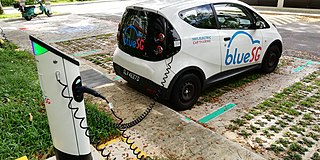
Clean technology, also called cleantech or climatetech, is any process, product, or service that reduces negative environmental impacts through significant energy efficiency improvements, the sustainable use of resources, or environmental protection activities. Clean technology includes a broad range of technology related to recycling, renewable energy, information technology, green transportation, electric motors, green chemistry, lighting, grey water, and more. Environmental finance is a method by which new clean technology projects can obtain financing through the generation of carbon credits. A project that is developed with concern for climate change mitigation is also known as a carbon project.
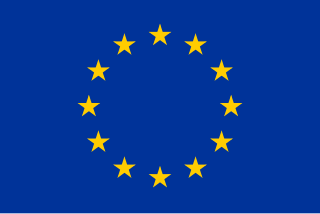
The energy policy of the European Union focuses on energy security, sustainability, and integrating the energy markets of member states. An increasingly important part of it is climate policy. A key energy policy adopted in 2009 is the 20/20/20 objectives, binding for all EU Member States. The target involved increasing the share of renewable energy in its final energy use to 20%, reduce greenhouse gases by 20% and increase energy efficiency by 20%. After this target was met, new targets for 2030 were set at a 55% reduction of greenhouse gas emissions by 2030 as part of the European Green Deal. After the Russian invasion of Ukraine, the EU's energy policy turned more towards energy security in their REPowerEU policy package, which boosts both renewable deployment and fossil fuel infrastructure for alternative suppliers.

A low-carbon economy (LCE) is an economy which absorbs as much greenhouse gas as it emits. Greenhouse gas (GHG) emissions due to human activity are the dominant cause of observed climate change since the mid-20th century. There are many proven approaches for moving to a low-carbon economy, such as encouraging renewable energy transition, energy conservation, and electrification of transportation. An example are zero-carbon cities.

Efficient energy use, or energy efficiency, is the process of reducing the amount of energy required to provide products and services. There are many technologies and methods available that are more energy efficient than conventional systems. For example, insulating a building allows it to use less heating and cooling energy while still maintaining a comfortable temperature. Another method is to remove energy subsidies that promote high energy consumption and inefficient energy use. Improved energy efficiency in buildings, industrial processes and transportation could reduce the world's energy needs in 2050 by one third.
Carbon leakage is a concept to quantify an increase in greenhouse gas emissions in one country as a result of an emissions reduction by a second country with stricter climate change mitigation policies. Carbon leakage is one type of spill-over effect. Spill-over effects can be positive or negative; for example, emission reductions policy might lead to technological developments that aid reductions outside of the policy area. Carbon leakage is defined as "the increase in CO2 emissions outside the countries taking domestic mitigation action divided by the reduction in the emissions of these countries." It is expressed as a percentage, and can be greater or less than 100%. There is no consensus over the magnitude of long-term leakage effects.

Carbon emission trading (also called carbon market, emission trading scheme (ETS) or cap and trade) is a type of emissions trading scheme designed for carbon dioxide (CO2) and other greenhouse gases (GHGs). A form of carbon pricing, its purpose is to limit climate change by creating a market with limited allowances for emissions. Carbon emissions trading is a common method that countries use to attempt to meet their pledges under the Paris Agreement, with schemes operational in China, the European Union, and other countries.

Individual action on climate change describes the personal choices that everyone can make to reduce the greenhouse gas emissions of their lifestyles and catalyze climate action. These actions can focus directly on how choices create emissions, such as reducing consumption of meat or flying, or can be more focus on inviting political action on climate or creating greater awareness how society can become more green.

Climate change has resulted in an increase in temperature of 2.3 °C (4.14 °F) (2022) in Europe compared to pre-industrial levels. Europe is the fastest warming continent in the world. Europe's climate is getting warmer due to anthropogenic activity. According to international climate experts, global temperature rise should not exceed 2 °C to prevent the most dangerous consequences of climate change; without reduction in greenhouse gas emissions, this could happen before 2050. Climate change has implications for all regions of Europe, with the extent and nature of impacts varying across the continent.

Climate finance is an umbrella term for financial resources such as loans, grants, or domestic budget allocations for climate change mitigation, adaptation or resiliency. Finance can come from private and public sources. It can be channeled by various intermediaries such as multilateral development banks or other development agencies. Those agencies are particularly important for the transfer of public resources from developed to developing countries in light of UN Climate Convention obligations that developed countries have.

Renewables supply a quarter of energy in Turkey, including heat and electricity. Some houses have rooftop solar water heating, and hot water from underground warms many spas and greenhouses. In parts of the west hot rocks are shallow enough to generate electricity as well as heat. Wind turbines, also mainly near western cities and industry, generate a tenth of Turkey’s electricity. Hydropower, mostly from dams in the east, is the only modern renewable energy which is fully exploited. Hydropower averages about a fifth of the country's electricity, but much less in drought years. Apart from wind and hydro, other renewables; such as geothermal, solar and biogas; together generated almost a tenth of Turkey’s electricity in 2022. Over half the installed capacity for electricity generation is renewables.

Droughts and heatwaves are the main hazards due to the climate of Turkey getting hotter. The temperature has risen by more than 1.5 °C (2.7 °F), and there is more extreme weather.

Coal, cars and lorries vent more than a third of Turkey's five hundred million tonnes of annual greenhouse gas emissions. They are mostly carbon dioxide and part of the cause of climate change in Turkey. A quarter of the emissions are from electricity generation.
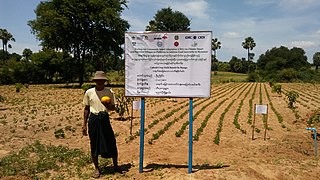
Climate-smart agriculture (CSA) is a set of farming methods that has three main objectives with regards to climate change. Firstly, they use adaptation methods to respond to the effects of climate change on agriculture. Secondly, they aim to increase agricultural productivity and to ensure food security for a growing world population. Thirdly, they try to reduce greenhouse gas emissions from agriculture as much as possible. Climate-smart agriculture works as an integrated approach to managing land. This approach helps farmers to adapt their agricultural methods to the effects of climate change.
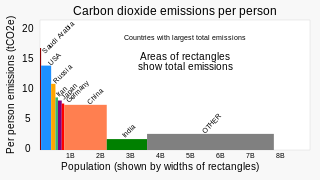
China's total greenhouse gas emissions are the world's highest, accounting for 35% of the world's total according to the International Energy Agency. The country's per capita greenhouse gas emissions are the 34th highest of any country, as of 2023.
References
- ↑ "The US is about to make a sharp turn on climate policy". MIT Technology Review. Retrieved 2024-11-06.
- ↑ "Washington voters uphold landmark climate law against challenge from conservatives". KLFY.com. 2024-11-06. Retrieved 2024-11-07.
- ↑ "Hungary says EU not doing enough to end Russian gas dependence".
- ↑ Karlsson, Mikael; Alfredsson, Eva; Westling, Nils (2020-03-15). "Climate policy co-benefits: a review". Climate Policy. 20 (3): 292–316. doi:10.1080/14693062.2020.1724070. ISSN 1469-3062.
- ↑ Dechezleprêtre, Antoine; Fabre, Adrien; Kruse, Tobias; Planterose, Bluebery; Sanchez Chico, Ana; Stantcheva, Stefanie (July 2022), Fighting Climate Change: International Attitudes Toward Climate Policies (Working Paper), Working Paper Series, doi:10.3386/w30265
- ↑ Doukas, Haris; Nikas, Alexandros (2020-01-01). "Decision support models in climate policy". European Journal of Operational Research. 280 (1): 1–24. doi:10.1016/j.ejor.2019.01.017. ISSN 0377-2217.
- ↑ "European Climate Law - European Commission". climate.ec.europa.eu. Retrieved 2024-11-06.
- ↑ "Why it's so hard to tell which climate policies actually work". The Economist. ISSN 0013-0613 . Retrieved 2024-11-22.